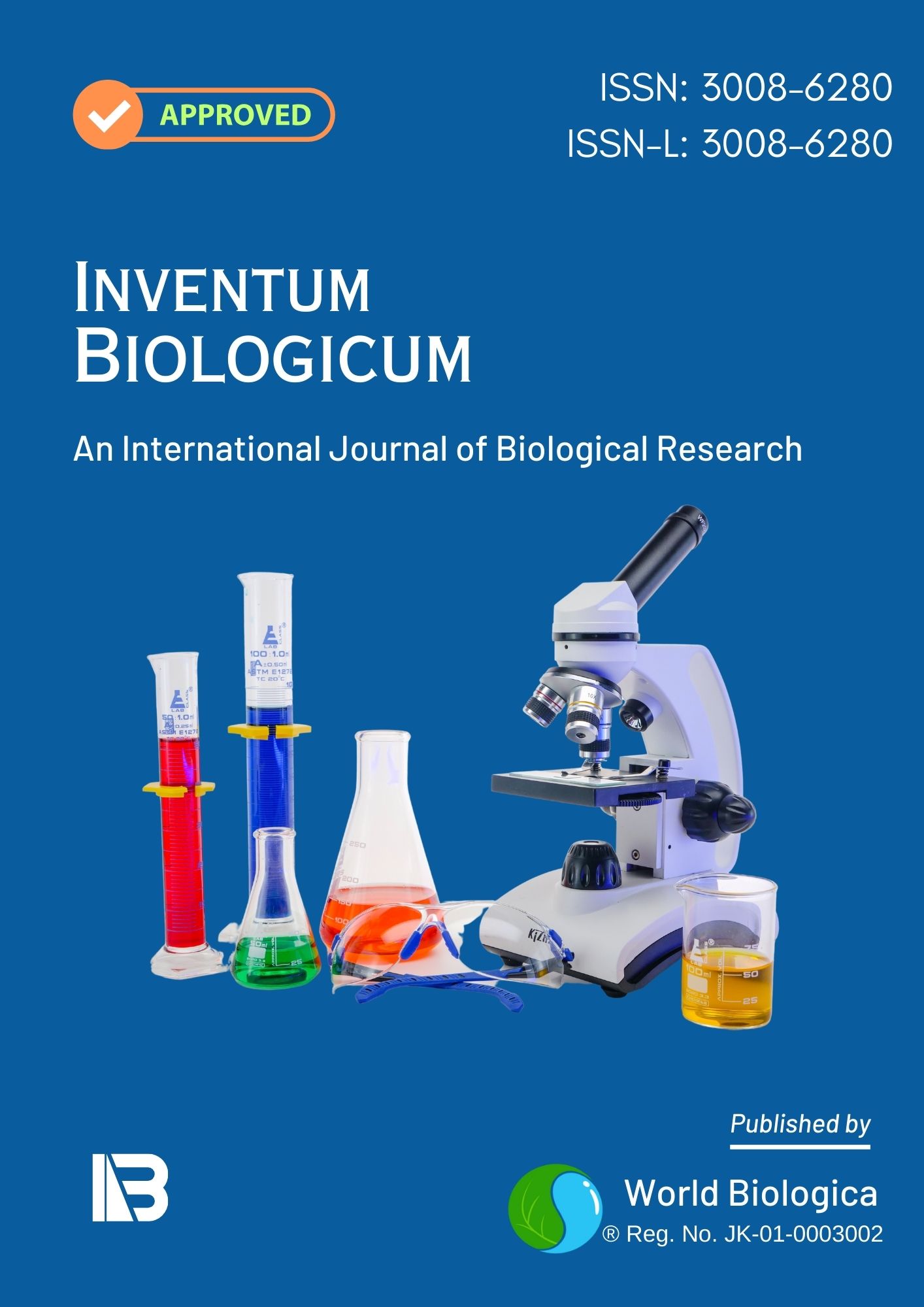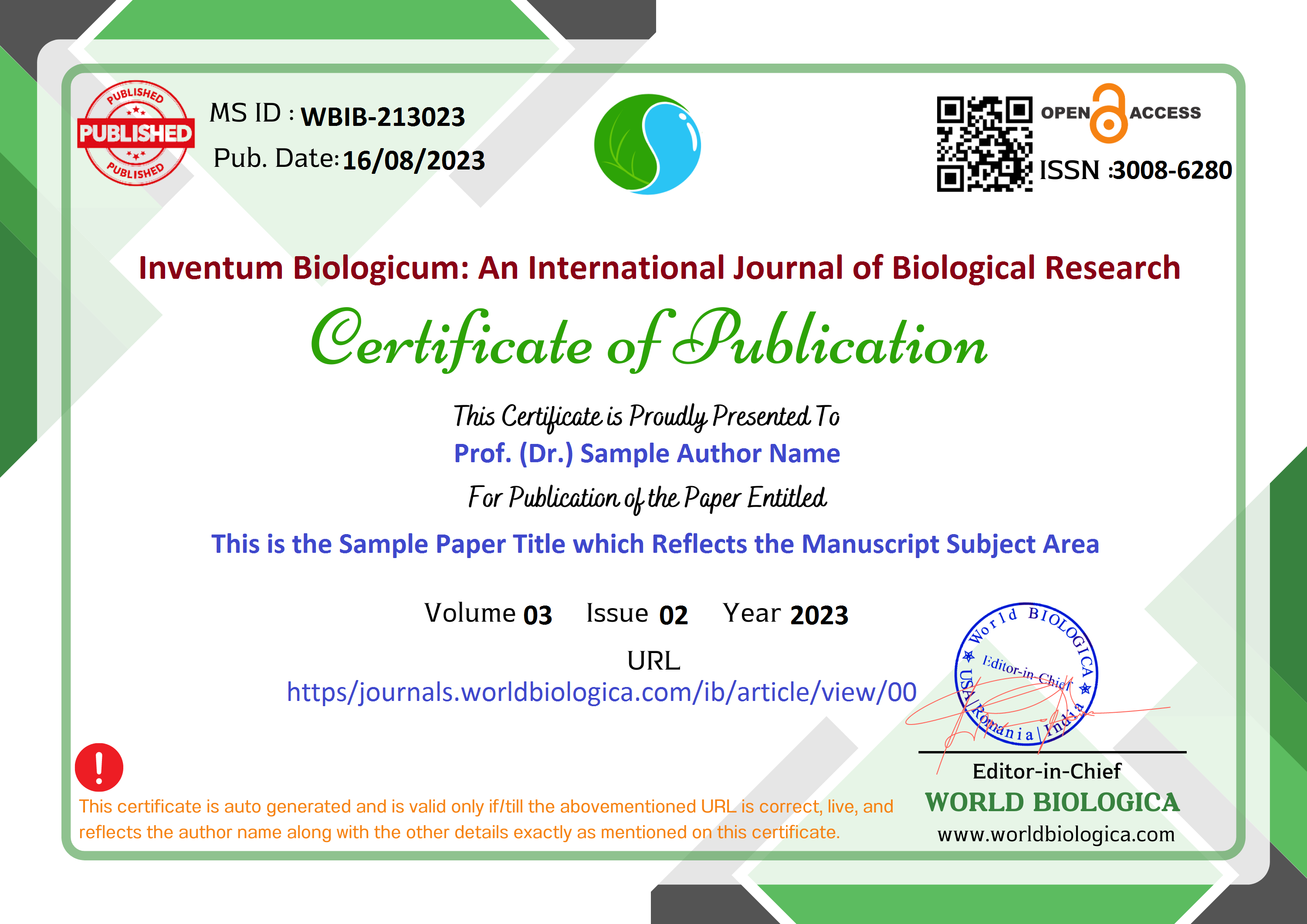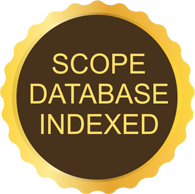Computational Genomic Sequencing for Covid-19
Keywords:
SARS-CoV-2, Bioinformatics, Drug design, Virus, Corona virusAbstract
SARS-CoV-2, a new virus belonging to the Coronaviridae family, has made itself worldwide attention seeker in the last two years owing to its exclusive infection and millions of deaths. Coronavirus has single –stranded RNA with 30 kb nucleotides with a positive sense in its genetic material. Although many years have been invested to study coronavirus still more research is pending. Therefore several tools have been invented called bioinformatics tools, specially designed to monitor and diagnose SARS-CoV-2 for fast detection and rapid reaction to treatment and understanding in its early stages. Following previous studies coronavirus RNA has enzyme furin that is found in organs like the small intestine, lungs, and liver of humans and is responsible for activating spike like proteins. However, coronavirus and associated enzymes can directly attack multiple organs and lead to organ failure in a small period. Therefore In silico studies can help to screen early stages of Covid-19 infections. In silico can provide data related to evolution, lineage, and drug resistance for COVID -19. In nutshell, the genomic sequencing tool is helpful to describe advanced research that is specifically for SARS-CoV-2 for its genomics, proteomics, early detections, rapid reactions, and drug discovery.
Downloads
References
Abrams, S., Wambua, J., Santermans, E., Willem, L., Kuylen, E., Coletti, P., Libin, P., Faes, C., Petrof, O., Herzog, S. A., Beutels, P., & Hens, N. (2021). Modelling the early phase of the Belgian COVID-19 epidemic using a stochastic compartmental model and studying its implied future trajectories. Epidemics, 35, 100449. https://doi.org/10.1016/j.epidem.2021.100449
Barzkar, N., Sohail, M., Tamadoni Jahromi, S., Gozari, M., Poormozaffar, S., Nahavandi, R., & Hafezieh, M. (2021). Marine bacterial esterases: Emerging biocatalysts for industrial applications. Applied Biochemistry and Biotechnology, 193(4), 1187–1214. https://doi.org/10.1007/s12010-020-03483-8
Bouckaert, R., Vaughan, T. G., Barido-Sottani, J., Duchêne, S., Fourment, M., Gavryushkina, A., Heled, J., Jones, G., Kühnert, D., De Maio, N., Matschiner, M., Mendes, F. K., Müller, N. F., Ogilvie, H. A., du Plessis, L., Popinga, A., Rambaut, A., Rasmussen, D., Siveroni, I., . . . Drummond, A. J. (2019). BEAST 2.5: An advanced software platform for Bayesian evolutionary analysis. PLOS Computational Biology, 15(4), e1006650. https://doi.org/10.1371/journal.pcbi.1006650
Corman, V. M., Landt, O., Kaiser, M., Molenkamp, R., Meijer, A., Chu, D. K., Bleicker, T., Brünink, S., Schneider, J., Schmidt, M. L., Mulders, D. G., Haagmans, B. L., van der Veer, B., van den Brink, S., Wijsman, L., Goderski, G., Romette, J. L., Ellis, J., Zambon, M., . . . and Drosten, C. (2020). Detection of 2019 novel coronavirus (2019-nCoV) by real-time RT-PCR. Eurosurveillance, 25(3). PubMed: 2000045
Cuypers, L., Li, G., Neumann-Haefelin, C., Piampongsant, S., Libin, P., Van Laethem, K., Vandamme, A. M., & Theys, K. (2016). Mapping the genomic diversity of HCV subtypes 1a and 1b: Implications of structural and immunological constraints for vaccine and drug development. Virus Evolution, 2(2), vew024. https://doi.org/10.1093/ve/vew024
Di Renzo, L., Gualtieri, P., Pivari, F., Soldati, L., Attinà, A., Cinelli, G., Leggeri, C., Caparello, G., Barrea, L., Scerbo, F., Esposito, E., & De Lorenzo, A. (2020). Eating habits and lifestyle changes during COVID-19 lockdown: An Italian survey. Journal of Translational Medicine, 18(1), 229. https://doi.org/10.1186/s12967-020-02399-5
El-Gebali, S., Mistry, J., Bateman, A., Eddy, S. R., Luciani, A., Potter, S. C., Qureshi, M., Richardson, L. J., Salazar, G. A., Smart, A., Sonnhammer, E. L. L., Hirsh, L., Paladin, L., Piovesan, D., Tosatto, S. C. E., & Finn, R. D. (2019). The Pfam protein families database in 2019. Nucleic Acids Research, 47(D1), D427–D432. https://doi.org/10.1093/nar/gky995
Grenfell, B. T., Pybus, O. G., Gog, J. R., Wood, J. L., Daly, J. M., Mumford, J. A., & Holmes, E. C. (2004). Unifying the epidemiological and evolutionary dynamics of pathogens. Science, 303(5656), 327–332. https://doi.org/10.1126/science.1090727
Hadfield, J., Megill, C., Bell, S. M., Huddleston, J., Potter, B., Callender, C., Sagulenko, P., Bedford, T., & Neher, R. A. (2018). Nextstrain: Real-time tracking of pathogen evolution. Bioinformatics, 34(23), 4121–4123. https://doi.org/10.1093/bioinformatics/bty407
Kalvari, I. K. (2018). Computational approaches for the identification of LIR-motifs in selective autophagy receptor and adaptor proteins [Doctoral Dissertation]. Faculty of Pure and Applied Sciences, University of Cyprus.
Katoh, K., & Standley, D. M. (2013). MAFFT multiple sequence alignment software version 7: Improvements in performance and usability. Molecular Biology Evolution, 30(4), 772–780. https://doi.org/10.1093/molbev/mst010
Kieliszek, M., Pobiega, K., Piwowarek, K., & Kot, A. M. (2021). Characteristics of the proteolytic enzymes produced by lactic acid bacteria. Molecules, 26(7). https://doi.org/10.3390/molecules26071858
Klenk, H. D., & Garten, W. (1994). Host cell proteases controlling virus pathogenicity. Trends in Microbiology, 2(2), 39–43. https://doi.org/10.1016/0966-842x(94)90123-6
Libin, P., Beheydt, G., Deforche, K., Imbrechts, S., Ferreira, F., Van Laethem, K., Theys, K., Carvalho, A. P., Cavaco-Silva, J., Lapadula, G., Torti, C., Assel, M., Wesner, S., Snoeck, J., Ruelle, J., De Bel, A., Lacor, P., De Munter, P., Van Wijngaerden, E., . . . and Vandamme, A. M. (2013). RegaDB: Community-driven data management and analysis for infectious diseases. Bioinformatics, 29(11), 1477–1480. https://doi.org/10.1093/bioinformatics/btt162
Libin, P., Vanden Eynden, E., Incardona, F., Nowé, A., Bezenchek, A., Group, E. S., Sönnerborg, A., Vandamme, A. M., Theys, K., & Baele, G. (2017). PhyloGeoTool: Interactively exploring large phylogenies in an epidemiological context. Bioinformatics, 33(24), 3993–3995. https://doi.org/10.1093/bioinformatics/btx535
Madsen, E. E., Krustrup, P., Larsen, C. H., Elbe, A. M., Wikman, J. M., Ivarsson, A., & Lautenbach, F. (2021). Resilience as a protective factor for well-being and emotional stability in elite-level football players during the first wave of the COVID-19 pandemic. Science and Medicine in Football, 5(sup1)(Suppl. 1), 62–69. https://doi.org/10.1080/24733938.2021.1959047
Mitchell, A. L., Almeida, A., Beracochea, M., Boland, M., Burgin, J., Cochrane, G., Crusoe, M. R., Kale, V., Potter, S. C., Richardson, L. J., Sakharova, E., Scheremetjew, M., Korobeynikov, A., Shlemov, A., Kunyavskaya, O., Lapidus, A., & Finn, R. D. (2020). MGnify: The microbiome analysis resource in 2020. Nucleic Acids Research, 48(D1), D570–D578. https://doi.org/10.1093/nar/gkz1035
Naveed, M., Nadeem, F., Mehmood, T., Bilal, M., Anwar, Z., & Amjad, F. (2021). Protease—A versatile and ecofriendly biocatalyst with multi-industrial applications: An updated review. Catalysis Letters, 151(2), 307–323. https://doi.org/10.1007/s10562-020-03316-7
Nawrocki, E. P., & Eddy, S. R. (2013). Infernal 1.1: 100-Fold faster RNA homology searches. Bioinformatics, 29(22), 2933–2935. https://doi.org/10.1093/bioinformatics/btt509
Ngcapu, S., Theys, K., Libin, P., Marconi, V. C., Sunpath, H., Ndung’u, T., & Gordon, M. L. (2017). Characterization of nucleoside reverse transcriptase inhibitor-associated mutations in the RNase H region of HIV-1 subtype C infected individuals. Viruses, 9(11), 330. https://doi.org/10.3390/v9110330
Rambaut, A., Holmes, E. C., O’Toole, Á., Hill, V., McCrone, J. T., Ruis, C., du Plessis, L., & Pybus, O. G. (2020). A dynamic nomenclature proposal for SARS-CoV-2 lineages to assist genomic epidemiology. Nature Microbiology, 5(11), 1403–1407. https://doi.org/10.1038/s41564-020-0770-5
Reiling, N., Hölscher, C., Fehrenbach, A., Kröger, S., Kirschning, C. J., Goyert, S., & Ehlers, S. (2002). Cutting edge: Toll-like receptor (TLR) 2-and TLR4-mediated pathogen recognition in resistance to airborne infection with Mycobacterium tuberculosis. Journal of Immunology, 169(7), 3480–3484. https://doi.org/10.4049/jimmunol.169.7.3480
Reimering, S., Muñoz, S., & McHardy, A. C. (2020). Phylogeographic reconstruction using air transportation data and its application to the 2009 H1N1 influenza A pandemic. PLOS Computational Biology, 16(2), e1007101. https://doi.org/10.1371/journal.pcbi.1007101
Solis-Reyes, S., Avino, M., Poon, A., & Kari, L. (2018). An open-source k-mer based machine learning tool for fast and accurate subtyping of HIV-1 genomes. PLOS ONE, 13(11), e0206409. https://doi.org/10.1371/journal.pone.0206409
Spiteri, G., Fielding, J., Diercke, M., Campese, C., Enouf, V., Gaymard, A., Bella, A., Sognamiglio, P., Sierra Moros, M. J., Riutort, A. N., Demina, Y. V., Mahieu, R., Broas, M., Bengnér, M., Buda, S., Schilling, J., Filleul, L., Lepoutre, A., Saura, C., . . . and Ciancio, B. C. (2020). First cases of coronavirus disease 2019 (COVID-19) in the WHO European Region, 24 January to 21 February 2020. Eurosurveillance, 25(9). PubMed: 2000178
Tcherepanov, V., Ehlers, A., & Upton, C. (2006). Genome Annotation Transfer Utility (GATU): Rapid annotation of viral genomes using a closely related reference genome. BMC Genomics, 7(1), 150. https://doi.org/10.1186/1471-2164-7-150
Theys, K., Deforche, K., Libin, P., Camacho, R. J., Van Laethem, K., & Vandamme, A. M. (2010). Resistance pathways of human immunodeficiency virus type 1 against the combination of zidovudine and lamivudine. Journal of General Virology, 91(8), 1898–1908. https://doi.org/10.1099/vir.0.022657-0
UniProt Consortium. (2019). UniProt: A worldwide hub of protein knowledge. Nucleic Acids Research, 47(D1), D506–D515. https://doi.org/10.1093/nar/gky1049
Upton, C., Hogg, D., Perrin, D., Boone, M., & Harris, N. L. (2000). Viral genome organizer: A system for analyzing complete viral genomes. Virus Research, 70(1–2), 55–64. https://doi.org/10.1016/s0168-1702(00)00210-0
Varatharaj, A., Thomas, N., Ellul, M. A., Davies, N. W. S., Pollak, T. A., Tenorio, E. L., Sultan, M., Easton, A., Breen, G., Zandi, M., Coles, J. P., Manji, H., Al-Shahi Salman, R., Menon, D. K., Nicholson, T. R., Benjamin, L. A., Carson, A., Smith, C., Turner, M. R., . . . and CoroNerve Study Group. (2020). Neurological and neuropsychiatric complications of COVID-19 in 153 patients: A UK-wide surveillance study. Lancet Psychiatry, 7(10), 875–882. https://doi.org/10.1016/S2215-0366(20)30287-X
Volz, E. M., & Siveroni, I. (2018). Bayesian phylodynamic inference with complex models. PLOS Computational Biology, 14(11), e1006546. https://doi.org/10.1371/journal.pcbi.1006546
Wang, Y., Cui, X., Chen, X., Yang, S., Ling, Y., Song, Q., Zhu, S., Sun, L., Li, C., Li, Y., Deng, X., Delwart, E., & Zhang, W. (2020). A recombinant infectious bronchitis virus from a chicken with a spike gene closely related to that of a turkey coronavirus. Archives of Virology, 165(3), 703–707. https://doi.org/10.1007/s00705-019-04488-3
Watkins, J., & Wulaningsih, W. (2020). Three further ways that the COVID-19 pandemic will affect health outcomes. International Journal of Public Health, 65(5), 519–520. https://doi.org/10.1007/s00038-020-01383-6
Westerhoff, H. V., & Kolodkin, A. N. (2020). Advice from a systems-biology model of the corona epidemics. npj Systems Biology and Applications, 6(1), 18. https://doi.org/10.1038/s41540-020-0138-8
Wu, D., Lu, J., Liu, Y., Zhang, Z., & Luo, L. (2020). Positive effects of COVID-19 control measures on influenza prevention. International Journal of Infectious Diseases, 95, 345–346. https://doi.org/10.1016/j.ijid.2020.04.009
Yang, G. Z., J Nelson, B., Murphy, R. R., Choset, H., Christensen, H., H Collins, S., Dario, P., Goldberg, K., Ikuta, K., Jacobstein, N., Kragic, D., Taylor, R. H., & McNutt, M. (2020). Combating COVID-19—The role of robotics in managing public health and infectious diseases. Science Robotics, 5(40), eabb5589. https://doi.org/10.1126/scirobotics.abb5589
Zhao, S., Lin, Q., Ran, J., Musa, S. S., Yang, G., Wang, W., Lou, Y., Gao, D., Yang, L., He, D., & Wang, M. H. (2020). Preliminary estimation of the basic reproduction number of novel coronavirus (2019-nCoV) in China, from 2019 to 2020: A data-driven analysis in the early phase of the outbreak. International Journal of Infectious Diseases, 92, 214–217. https://doi.org/10.1016/j.ijid.2020.01.050
Zsidisin, G. A., Panelli, A., & Upton, R. (2000). Purchasing organization involvement in risk assessments, contingency plans, and risk management: An exploratory study. Supply Chain Management, 5(4), 187–198. https://doi.org/10.1108/13598540010347307
Downloads
-
Download PDF
 Abstract Views: 209,
Abstract Views: 209,  Download PDF: 61
Download PDF: 61
Published
How to Cite
Issue
Section
License
Copyright (c) 2022 Inventum Biologicum: An International Journal of Biological Research

This work is licensed under a Creative Commons Attribution-NonCommercial-NoDerivatives 4.0 International License.


















